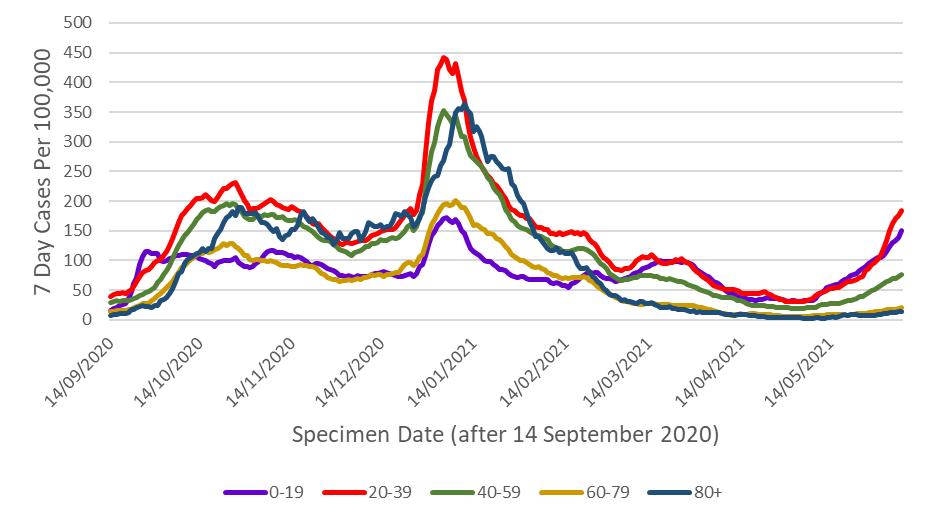The good news is that there’s guidance out for the higher (and further) education sector to help with planning for Covid-risk reduction in the next academic year.
If you’re in Scotland, that is.
It’s interesting because it sort of bypasses the usual process of expert group advises government, government has a think, and government issues guidance. That’s not to say that the latter won’t appear – but in this case the Scottish government has rather helpfully just published the advice note from the Advisory Sub-Group on Universities and Colleges directly.
This way if you’re a politician and it goes wrong, you can blame providers but avoid having said anything yourself that opposition parties might quote. In theory.
What we have here is advice that looks at various interventions designed to suppress the virus on the assumption that Scotland moves into what the document is still calling a “new normal” – or beyond level 0 of current restrictions.
The idea is that as restrictions are eased in wider society, the expectation is that comparable restrictions should be eased in university settings unless there is a clear justification for not doing so. There are caveats – “plans should recognise alternative scenarios of restricted/blended learning … if the assumptions underpinning this advice not be realised”, but you get the point.
State of the epidemic and vaccination
There’s a helpful bit on policy context that notes that at the time of writing, cases are growing exponentially, that the Delta variant is more transmissible, and the uncertainty regarding the impact of Delta on severity of illness, treatment or reinfections. Clearly given the way vaccination roll out is being handled, locations where groups of younger people gather are thus likely increasingly to become the focus of outbreaks not least because the biggest increase in interactions has been between those aged 18-29 with each other:

As such the key aim here is to maximise vaccination rates among students and staff – including through vaccinating international students, operating vaccination centres that are located in or near university and college settings, and implementing communication methods to promote registration, provide information, address concerns and enhance uptake.
Bits to note here include:
- On current programme projections and subject to supply, the group reckons that all those 30 years of age and over in Scotland will have had the opportunity to have completed two vaccination doses by w/c 9 August, and those age 18-29 by w/c 13 September, which is good headline news from a “will they all be jabbed” point of view;
- There is evidence that take-up is lower in younger age groups, with only 30% of the eligible population in Scotland currently signed up to receive a vaccination appointment and this also varies by cultural and other beliefs (30% of this age group have already received their vaccination as part of the other JCVI priority groups). In Scotland as around the rest of the UK there seems to be some evidence of Twitter confusing confusing pent up demand from some young people with overall participation rates (ironic given that’s the mistake many make about “trending” twitter topics) and so the ask is that universities play their part in encouraging (but not mandating) take up;
- Measures may well put in place for international students to provide proof of their vaccination status, and universities maximising and confirming vaccination rates among international students “will be an essential component of any strategy to reduce risks” for the next academic year;
- The note says that university and college premises should be investigated as potential locations for vaccination centres and/or mobile vaccination facilities deployed close to student accommodation (although given the earlier bullet, won’t that all be a bit late?);
- And naturally the involvement of student bodies in the development of these plans will increase their impact – universities are encouraged to develop peer-led locally targeted interventions to educate, persuade and enable access vaccination (in Scotland the influence that SUs have tends to be harnessed for good rather than repeatedly derided as problematic).
There’s intelligent recognition of the problem posed to the Prime Minister the other day – that a proportion of “cohort 12” (ie 18-29 year olds) will be returning to campus with at best only one vaccine dose (approx. 33-50% effective against Delta at preventing symptomatic disease, compared with up to 90% after two doses) and in any case, the projected completion of two doses for those age 18 and over by w/c 13 September does not allow for the 2-3 week period post-vaccination to maximise effectiveness of the vaccine.
As a result what are called here “additional precautions” – such as “hosting virtual Freshers’ weeks and maintaining online learning” – may therefore be required for the first few weeks of term.
If restrictions are not present in wider society that sounds like a pretty tall order for universities to achieve. Are we suggesting, for example, that the multiple students’ associations in Glasgow refrain from in-person entertainments events while nightclub and pub owners pack them in?
This would more realistically point to a delay to “moving in”, although this is clearly not a group that feels confident enough to say that out loud for now.
Testing, contact tracing and self-isolation
There’s no talk so far of household self-isolation requirements disappearing or changing in Scotland, so in this section we get a reiteration of the need for universities to support students to self-isolate – which always was easier for students in university run halls than for other students. “In 2020-21, the university sector provided assurance that practical and welfare support is in place” says the document, forgetting that the assurance was only ever really provided about students in university-run halls.
There surely isn’t a university that doesn’t realise by now that “it will be particularly important for 1st year students who will not have established peer support networks and may be a considerable distance away from their families”.
Asymptomatic Testing Sites will be making a return, and universities are asked to encourage (although again not mandate) take up, encouraging promoting the wider importance of contact tracing (including use of contact tracing apps) to boot.
This note also reminds us that international students will need to follow the required current guidance for green, amber and red listed countries before departure and on arrival in Scotland – but makes no note (for now) of the trial that’s been arranged to replace the hotel capacity with university halls given the capacity issues we might see in August and September. There is, however, a passage that basically says overseas students may not play ball with some of the restrictions and interventions and that universities should think about the “key facilitators of effective contact tracing interventions” that relate to the “co-production of contact tracing systems, perceptions of collective responsibility, perceived personal benefit, and perceptions of the contact tracing intervention as efficient, rigorous and reliable”.
Proportionate protective measures
The section on prevention is fascinating. A wider review of physical distancing is ongoing in Scotland but the focus here is on bespoke approaches for students on adherence – things like:
In advance of the next academic year, coordinated, sustained communication should take place over the summer, involving student representatives … tailored by institutions to suit local circumstances but would avoid a proliferation of differentiated and confusing messages which may not promote adherence.”
The note recognises that “learning and research environments (workshops, labs, lectures, tutorials, libraries, study spaces etc) are at the lower-risk end of the spectrum” (without remembering that that’s because they were all operating at low or zero capacity last year) but then says that student accommodation is a higher risk setting (without remembering that that’s because they were all operating at full capacity last year).
Student accommodation should “therefore be a priority focus for planning” – residences are likely to accommodate a concentration of younger students who may not be protected by vaccination for some or all of the first term and they are likely to have particularly dense patterns of contact, so regular testing and contact tracing will be “essential” for early identification of cases.
Fairly preposterously, instead of saying “delay the move in” or more drastically “reduce the capacity”, universities (which, let’s remember, don’t actually operate much of the student accommodation we’re talking about) are told to concentrate on “pockets” of dense contact with “particular work to establish norms of protective behaviours”, the application of “environmental modifications” (that’s less mixing to you and me) and support for adherence to processes such as regular testing. In addition, the application of “clear policies to avoid divisions and tensions, and to deal fairly with non-adherence”, will be essential.
Move in, don’t mix. Sure.
If that all sounds like sleepwalking into a scenario where a) measures fail and cause a bunch of lockdowns, and then b) result in lots of oppressive steps being taken to manage the issues that impact mental health, you’d be right.
We do at least later get “advice would be to postpone [Freshers Week] activities for a few weeks” if possible, and to “focus on activities involving smaller numbers where distancing can be applied and ventilation enhanced”, but that again sounds pretty impossible if the plan is “keep the move in dates but delay the Freshers parties” – because all that will mean is that new students do what they always do – but in much less controlled environments.
NUS Scotland President Matt Crilly is being on top polite form when he says:
Students must be treated fairly – we are keen to work with the Scottish Government to develop coherent guidance that ensures parity for student associations if pubs and bars are open and able to host unofficial freshers’ week events.”
There’s a few other bits in there on managing the risk of importation of the virus to Scotland, with providers asked to do things with halls which look tricky – but overall, as I say, this note seems to think that to the extent to which risks can be identified, they can be mitigated by a mixture of making the same mistakes as last year, doing less “official” social mixing early on, and some wishful thinking.
If the risks are real. I’ll politely suggest here that something a little more radical may actually be required.
Bubbles are back in Wales
Meanwhile in Wales, the new minister for Education and Welsh Language Jeremy Miles has put out a bizarre statement that revives that much maligned idea of June 2020 – bubbles.
The aim as it is in Scotland is to move away from the strict 2m social distancing model for university students to allow more in-person learning in the autumn term if Wales continues to see low or moderate risk.
But what’s weird is the idea that this will mean universities can make plans “based on contact groups” where risk assessments show it is safe to do so:
We are planning to model adult education contact groups on groups that will be familiar in other areas of life, modelled on more than one group of up to 6, or single groups of up to 30 depending on the setting, room capacity and risk assessments in the setting, which must be in line with the requirements to take all reasonable measures. This approach would apply when the risk levels are low to moderate and we have other robust mitigations in place.”
You might recall an amusing moment last summer when Universities UK had a “reassurance” briefing out that didn’t mention bubbles, but then a VC blurted out the idea on the Zoom call to launch the guidance – which prompted every media outlet in the country to run a bubble pun.
Of course, anyone that actually thought about student bubbles as a way of managing risk for more than about six seconds rapidly concluded that they wouldn’t work in almost every higher education context imaginable, so it’s something of a surprise to see them make a return in Wales.













Hi Jim I am glad to see you raising the inadequacy of plans for students returning to university. I have written to Jamie Hepburn minister for higher and further education in Scotland about this issue. I note your point that Scottish Government are planning to increase vaccination among the university population however, what seems to be ignored is that not only will some 18 year olds not have had their 2nd jab but that all 16/17 and 18 year olds with a birthday after 31st July 2021 will not be offered a vaccination at all. JCVI say the pfizer vaccine… Read more »